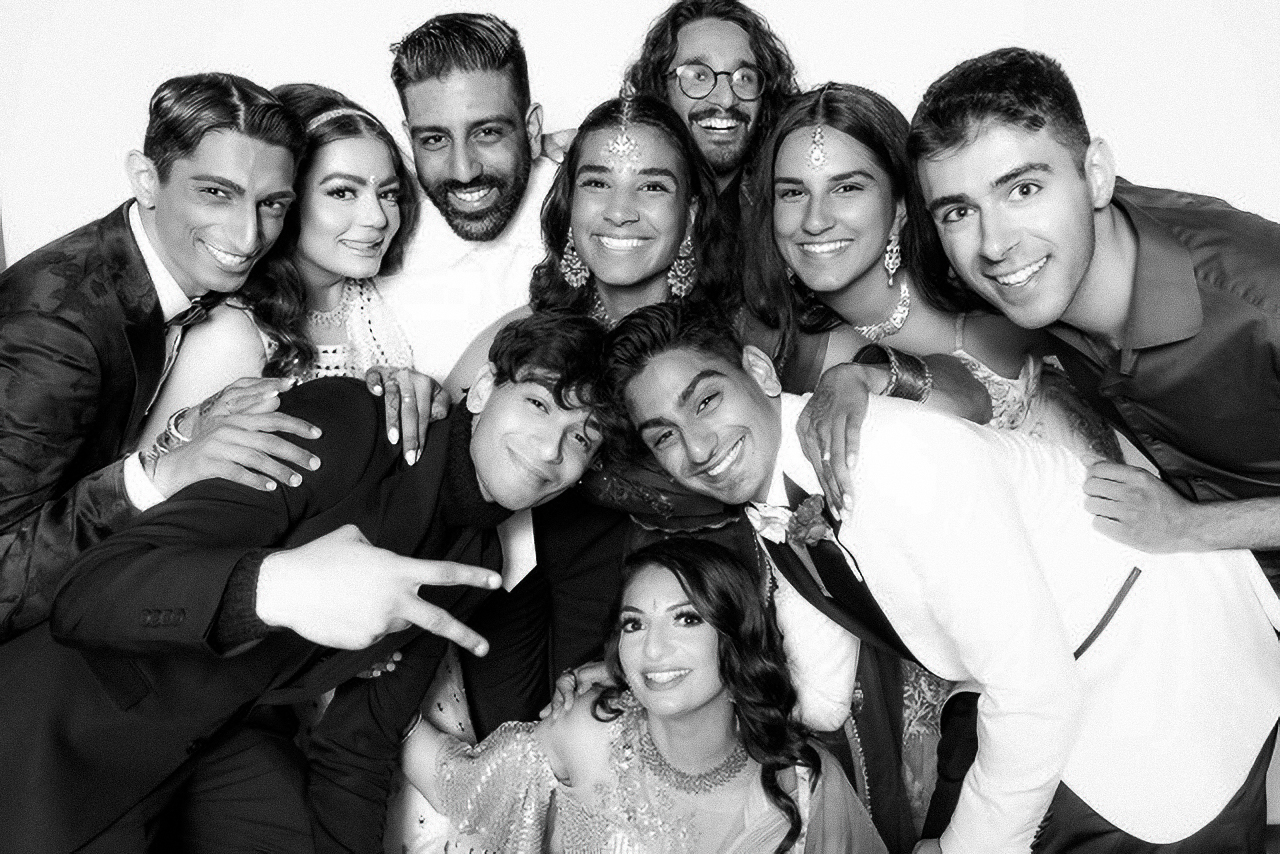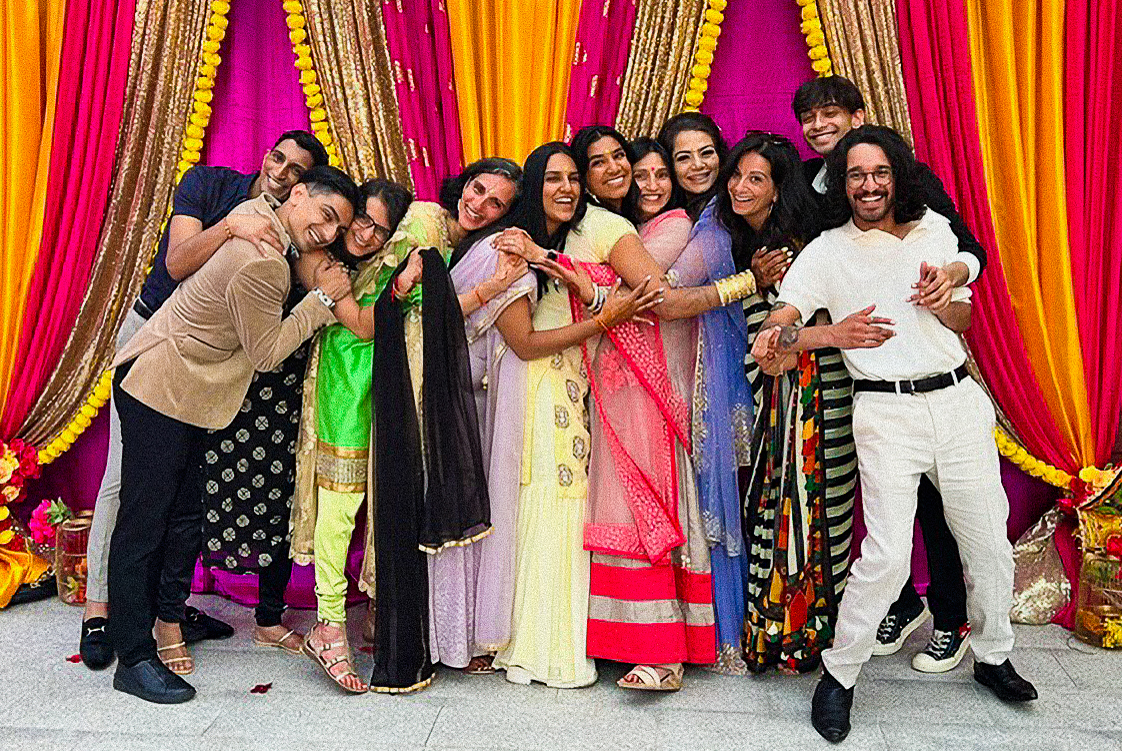Ahead of her novel The Wedding (available from September 7), author Gurjinder Basran reflects on the bells and whistles of a lavish wedding from her own life.
In 2022, when anyone asked me what my summer plans were, I told them my nephew was getting married. Every non-Indian looked back at me blankly, not understanding how a wedding could dominate an entire season when in truth, the planning had consumed my attention for the better part of a year. Because my nephew and his fiancée lived in New York, and her family was in Toronto, my sister—mother of the groom—assumed the day-to-day planning of their Vancouver wedding. Being an entrepreneur, she took to the planning like a project manager and created workback schedules, shortlisted venues, rented desi decor, selected invitations, and negotiated family politics to determine who would make the 400-plus guest list.
Being the youngest of six sisters and self-proclaimed outsider in my family, I was not a fan of the Indian wedding culture that had become commonplace in the South Asian community. Having come from humble beginnings and modest means, I found the over-the-top extravagance wasteful and performative, and much to my mother’s disappointment, I rarely accepted invitations to attend. When I did, it was often under guilt and duress. Frustrated, my mother often reminded me of the importance of maintaining these family and community connections, which even after her death in 2013, I continued to discount. I understood the need for these close connections in India. There, our families lived interdependently, and a wedding brought villages and families together to bear witness to the bittersweet binding of family ties. But here in present-day Vancouver, I failed to see the point of such displays.
Despite my pessimism, it wasn’t long before I too was caught up in the wedding fervour, often riding shotgun with my sister on her countless shopping trips to buy wedding clothes. As a former fashion design student, I was happy to put my skills to work, and I helped my sister select her made-to-measure wardrobe. I chose the fabrics, colour combinations, embroidery style, and beadwork, and suggested hairstyles and makeup. I made mood boards, clicked “follow” on Indian designers and influencers, and watched hours of saree-draping Instagram reels and TikToks. I was immersed.
The sticker shock of bridal lehengas priced at thousands of dollars no longer fazed me, and though I hated the idea of buying so many occasion clothes that would only be worn once, I was quick to plunk down my credit card for a pricey black sequinned saree that weighed over 10 pounds, was over six metres long, and when wrapped was so heavy it required several giant safety pins to keep it from unravelling at the waist. Like most of the heavily embroidered clothing, it was uncomfortable and breathtaking in every sense of the word. Along with all my other purchases, it was labelled and kitted with matching accessories on rolling racks for easy costume changes. At times, the entire wedding felt like a staged production. Even my sister’s beautifully landscaped backyard was turned into a colourful Bollywood set complete with garlands of flowers dripping from trees, two full-service bars, and a wooden dance floor under a canopy of patio lights— the perfect backdrop from which to host the pre- and post-wedding revelry.
The week leading up to the wedding was full of small and stacking dramas, a Jenga-like stress that came from striving for perfection without having the presence of mind to remember that this was all supposed to be fun. My sisters and I were often summoned by our nephews to diffuse tense situations and remind the mother-of-the-groom to calm down, to breathe, and that no one would die of hunger because the food service was slow. How easy it was to get caught up in the matrimonial machinery of wanting only the best when wanting is such a poor substitute for the ordinary happiness that is often intertwined with unforeseen absurdities and mishaps.

Photo courtesy of Gurjinder Basran.
Looking back at it now, it’s those unscripted moments that I remember the most. The freak rainstorm that soaked the outdoor wedding tent, unleashing a swarm of mosquitos that hastened the end of the formal ceremony; the moment when my eldest niece’s Louboutins went missing at the temple, leaving her running around like a slipperless Cinderella in search of the red-bottomed shoes; and the after-party’s father/son duelling DJ battle, dance-offs, and backyard conga lines. Those moments shared with distant relatives whose slight resemblance sparked recognition in an otherwise would-be stranger, those moments with people we called uncle and aunty who bore no relation to us other than the ones we choose for ourselves, those moments filled with the chaotic joy that came from surrendering to the love of a big fat Indian family are the moments that made it all worth it. They are the moments that my mother knew were important; shared experiences are the seeds that keep us rooted to tradition no matter where we call home.
Every few months, my iPhone resurfaces select wedding photos and videos, reshaping my memories, distilling them down to soundtracked vignettes meant to remind me how happy we were, how much fun we had, and how love is what sustains us—still.
Read more essays.









